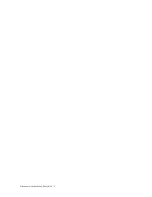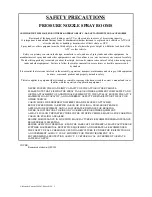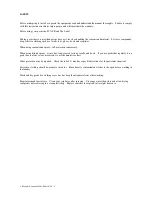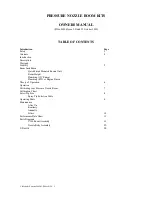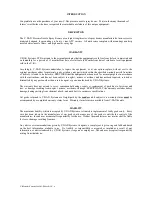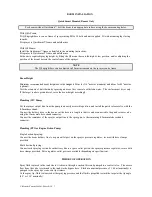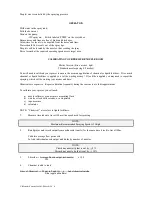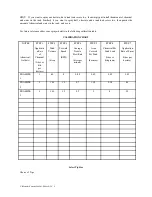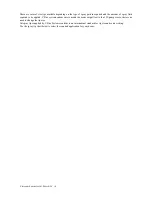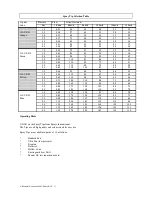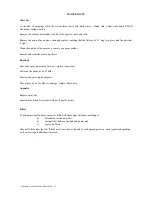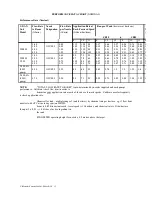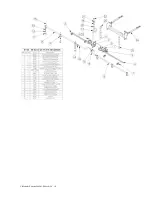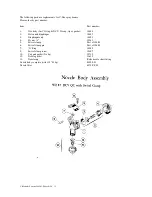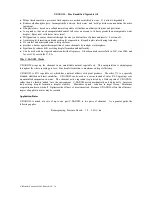
Droplet
size
is
controlled
by
the
spraying
pressure.
OPERATION
With
water
in
the
spray
tank;
Fold
the
boom
out.
Turn
on
the
pump,
-12V
sprayers;
Switch
labeled
‘PUMP’
on
the
switch
box
Ensure
hoses
and
lines
are
free
of
kinks
and
blockages.
Allow
time
for
the
air
to
be
expelled
from
the
hoses
and
lines.
Water
should
flow
evenly
out
of
the
spray
tips.
Droplets
will
be
formed
by
the
nozzles,
thus
creating
the
spray.
Drive
forward
at
the
required
operating
speed
across
target
area.
CALIBRATING
YOUR
PRESSURE
NOZZLE
BOOM
Metric
Version
(litres,
metres,
kph)
(*Standard
nozzle
spacing
0.5
metres)
You will need to calibrate your sprayer to ensure the accurate application of chemical or liquid fertilizer. If too much
chemical or liquid fertilizer is applied you will be wasting money! If too little is applied you may need to repeat the
spraying,
which
will
be
wasting
your
money
and
time!
Chemicals
are
expensive.
Repeat
calibration
frequently
during
the
seasons
to
avoid
disappointment.
To
calibrate
your
sprayer
you
will
need:
a) nozzle
calibrator
or
an
accurate
measuring
flask
b) watch
or
clock
with
seconds,
or
a
stopwatch
c) tape-measure
d) calculator
NOTE:
“Chemical
“
also
refers
to
liquid
fertilizers.
1.
Measure
time
taken
to
travel
100m
at
the
speed
used
for
spraying
NOTE:
Maximum
Recommended
Spraying
Speed
is
12
Kph.
2.
Run
Sprayer
and
record
output
from
each
nozzle
(in
mls)
for
the
same
time
it
took
to
travel
100m.
Calculate
average
flow
per
nozzle.
Ie.
Add
individual
nozzle
output
and
divide
by
number
of
nozzles.
NOTE:
Check
any
nozzle
tip
that
is
out
by
±
5%
Discard
any
nozzle
tip
that
is
out
by
±
10%
3.
Litres/ha
=
Average
Nozzle
output
(ml/nozzle)
x
100
500
4.
Chemical
to
add
to
tank
Litres
of
Chemical
=
Water
in
Tank
(L)
x
Label
chemical
rate/ha
L/ha
(application
Rate)
Y:\Manuals\Current\90024-3-PNozz.DOC
8


